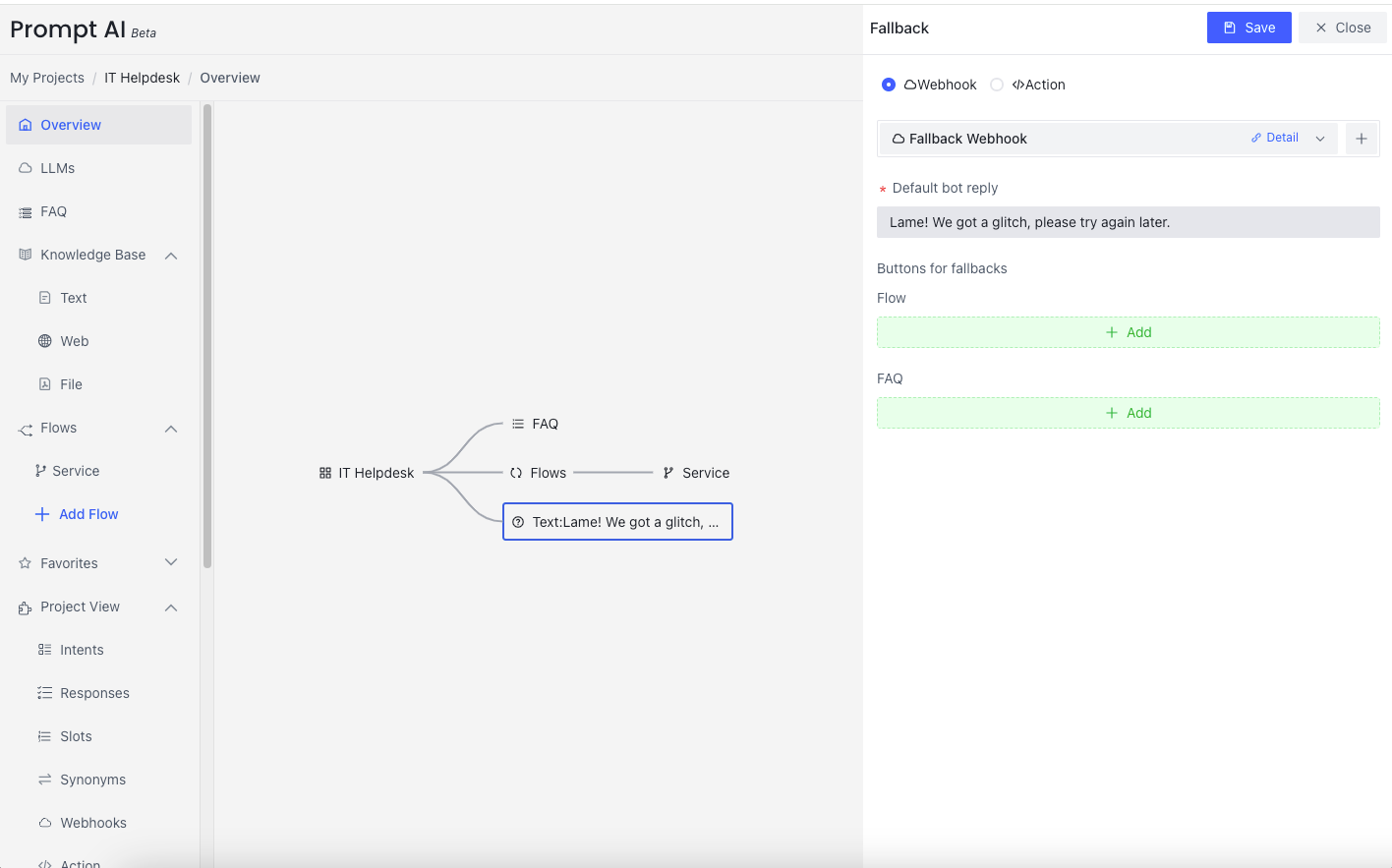Webhook
When a user’s intention is not recognized, webhook provides another way for Fallback, which, for example, can call the API of a large language model to return an answer.
Webhook
Webhook supports obtaining the latest user input and dialog id through slots.
- latest_message: User input when webhook is triggered. If it is a webhook triggered by Fallback, it is the user input when the fallback is triggered
- send_id: current session id
Example
Next, we will demonstrate how to connect Fallback to a webhook. The webhook needs to call an external API to get a response. Suppose we have an API like the following:
curl http://localhost/chat?input=What can PromptAI do?&chatId=xxxx
{
"message": "PromptAI is a cloud-based platform for designing professional intelligent assistants. It offers a range of features, including visual design tools, fast customization, and convenient integration. PromptAI can be used to create complex conversation flows and integrate them into business systems."
}
The question and session ID are used as input through the Http Get request, and the response returns data in JSON format, where the message field is the reply.
Webhook configuration

First, we configure the name and request address, and use the built-in slots {latest_message} and {send_id} in the request address to send the user input and session id to the API according to the API requirements. After receiving the returned message, we put message to relpy in the response processing part, and send {reply} to the user.
Configure Fallback with Webhook
Select “Overview” on the left navigation pane and then click “Fallback” in the diagram.
